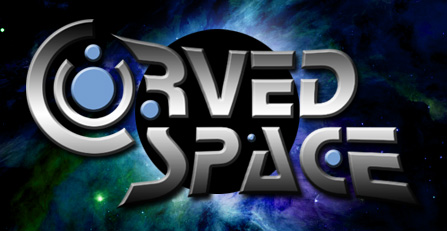Only 8 planets
#2

Posted 24 August 2006 - 09:08 PM
QUOTE
Much-maligned Pluto doesn't make the grade under the new rules for a planet: "a celestial body that is in orbit around the sun, has sufficient mass for its self-gravity to overcome rigid body forces so that it assumes a ... nearly round shape, and has cleared the neighborhood around its orbit."
Pluto is automatically disqualified because its oblong orbit overlaps with Neptune's.
Pluto is automatically disqualified because its oblong orbit overlaps with Neptune's.
Why wasn't Neptune disqualified???
Neraphym Archaeon

GWAMM

GWAMM
#4

Posted 25 August 2006 - 02:06 AM
QUOTE
Much-maligned Pluto doesn't make the grade under the new rules for a planet: "a celestial body that is in orbit around the sun, has sufficient mass for its self-gravity to overcome rigid body forces so that it assumes a ... nearly round shape, and has cleared the neighborhood around its orbit."
Pluto is automatically disqualified because its oblong orbit overlaps with Neptune's.
Pluto is automatically disqualified because its oblong orbit overlaps with Neptune's.
(emphasis mine)
Around "the sun"? Not just any star, but Sol specifically?
Those who will remember, will speak fondly of the warm morning breeze.
#5

Posted 25 August 2006 - 06:05 AM
In my opinion it looks like a once much larger world struck by disaster and wilddled away by the gravity of it broken off parts still trying to cling to it(what I believe charon, nix, and hydra are).
I think once we get a much closer look at all this we will find that it has many tiny objects smaller then any of its satilites swiming around it barely held in from flying off into space by its low mass... it will become apperent that it is a debree feild lightly held together in near sphereical form by the former core of a once greater world.
I think once we get a much closer look at all this we will find that it has many tiny objects smaller then any of its satilites swiming around it barely held in from flying off into space by its low mass... it will become apperent that it is a debree feild lightly held together in near sphereical form by the former core of a once greater world.

------------------------------------------------------------------------------------
#7

Posted 25 August 2006 - 07:55 AM
In my opinion it looks like a once much larger world struck by disaster and wilddled away by the gravity of it broken off parts still trying to cling to it(what I believe charon, nix, and hydra are).
I think once we get a much closer look at all this we will find that it has many tiny objects smaller then any of its satilites swiming around it barely held in from flying off into space by its low mass... it will become apperent that it is a debree feild lightly held together in near sphereical form by the former core of a once greater world.
From what I can remember of the subject, it's much more likely to be a moon of one of the gas giants that got moved out of its orbit somehow.
#11

Posted 25 August 2006 - 03:27 PM
You've been a very wonderful planet, Pluto... I'll miss you. 
Video of the Week! Click it! ;D (Second attempt!)
Blame it on the Pop

Why yes... I did give in to this here thing above. =O
Hug?
Blame it on the Pop
Why yes... I did give in to this here thing above. =O
Hug?
#14

Posted 31 August 2006 - 07:58 PM
I know why Pluto is no longer a planet! They want to make every astronomy textbook outdated! If that is indeed the case, I must say that it was a heck of a prank. 
Neptune has a fairly normal orbit along the ecliptic. Pluto's orbit is significantly tilted and has a bit more of a difference between its aphelion and perihelion (it's more elliptical than the other planets). Its perihelion (where it is closest to the sun) is closer to the sun than Neptune's semimajor axis, and it is therefore within Neptune's orbit for a certain length of its year. This is similar to the orbits of comets.
Just a little extra to add, I believe that the tilt of Pluto's orbit makes it impossible for a collision between the two planets, err... objects. Sorry Goto, we'll need to find another way to set things right in the cosmos.
QUOTE
Why wasn't Neptune disqualified???
Neptune has a fairly normal orbit along the ecliptic. Pluto's orbit is significantly tilted and has a bit more of a difference between its aphelion and perihelion (it's more elliptical than the other planets). Its perihelion (where it is closest to the sun) is closer to the sun than Neptune's semimajor axis, and it is therefore within Neptune's orbit for a certain length of its year. This is similar to the orbits of comets.
Just a little extra to add, I believe that the tilt of Pluto's orbit makes it impossible for a collision between the two planets, err... objects. Sorry Goto, we'll need to find another way to set things right in the cosmos.

 Sign In
Sign In Register
Register Help
Help





 MultiQuote
MultiQuote


















